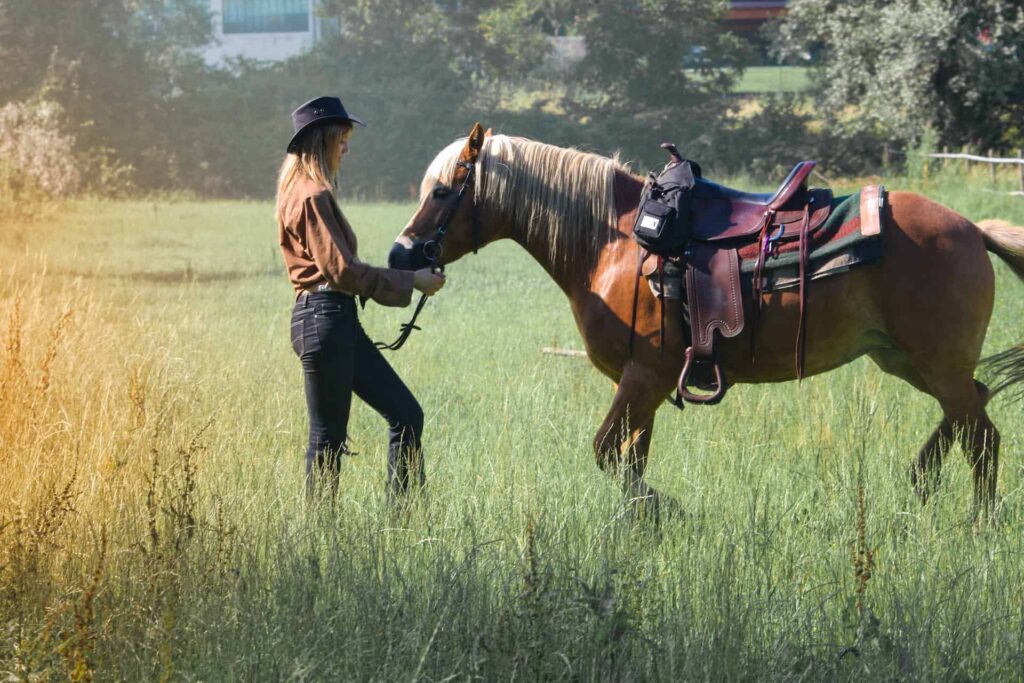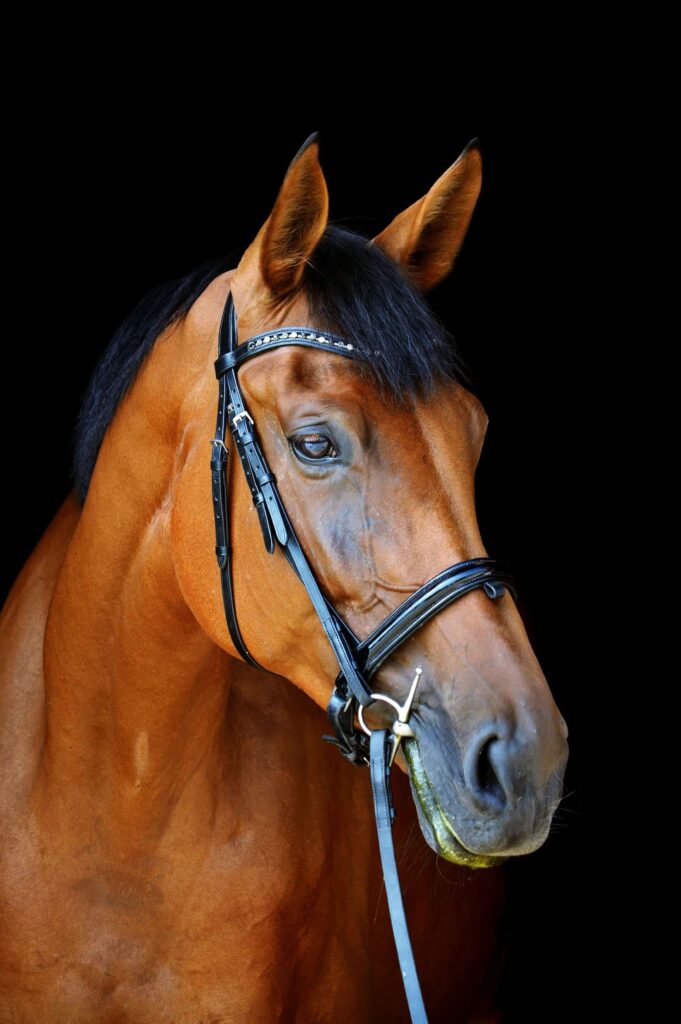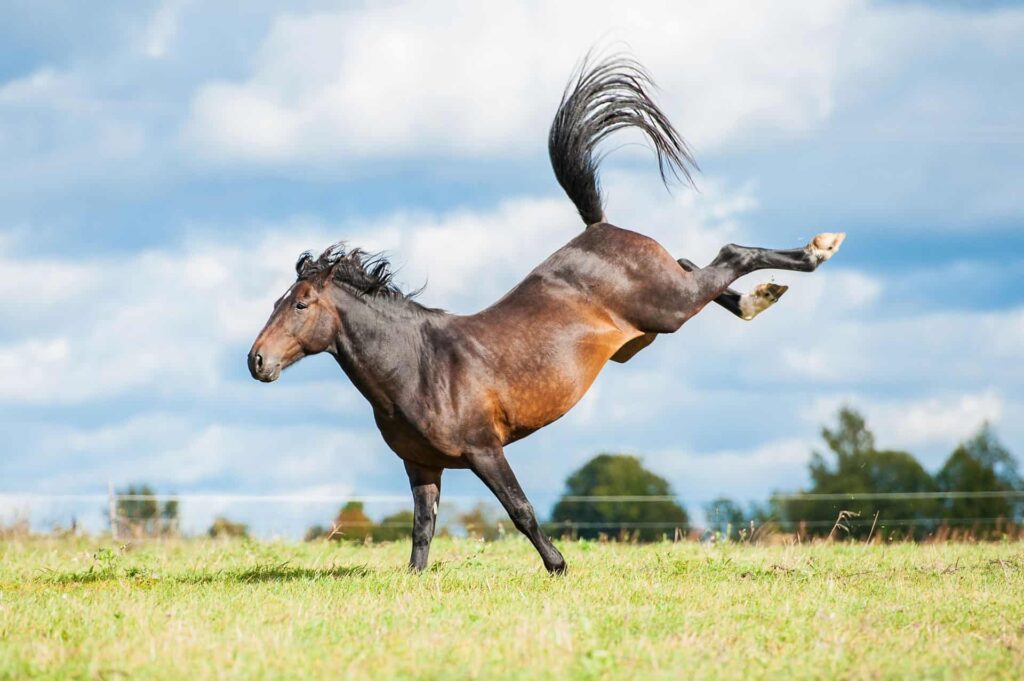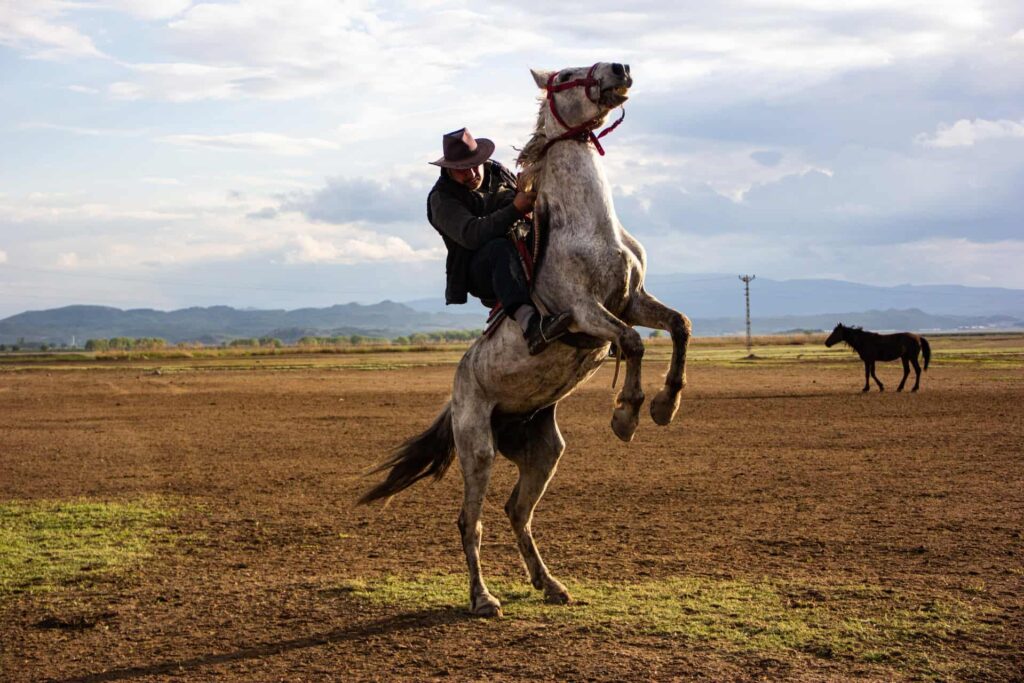Groundwork for horses is an important aspect of horse training that involves a series of exercises designed to establish a bond between the horse and the trainer. It is a vital first step in training horses and helps in developing trust, respect, and communication between the horse and the trainer. Groundwork is not only useful for young horses but also for older horses that have developed bad habits or have been mistreated in the past.
The fundamentals of groundwork for horses involve teaching the horse to respect the trainer’s space, move forward, stop, back up, and turn. These exercises establish a bond of trust between the horse and the trainer. Groundwork also helps in developing the horse’s balance, coordination, and flexibility, which are beneficial for riding. Start with basic groundwork exercises before moving on to more advanced techniques.
Key Takeaways
- Groundwork for horses is an important aspect of horse training that helps in developing trust, respect, and communication between the horse and trainer.
- The fundamentals of groundwork involve teaching the horse to respect the trainer’s space, move forward, stop, back up, and turn.
- Groundwork helps in developing the horse’s balance, coordination, and flexibility, which are beneficial for riding.
Fundamentals of Groundwork
Groundwork is a foundation of horse training that involves working with horses while they are on the ground. It is a safe and effective way to develop a relationship with the horse and prepare them for riding. Groundwork is the first step in any training program and aids in developing a safe and respectful partnership between horse and handler.
The fundamentals of groundwork include teaching the horse to lead, stand quietly, and respond to cues from the handler. It is important to establish a clear line of communication between the horse and handler, so the horse knows what is expected of them. This can be achieved through consistent, clear, and positive reinforcement.
In addition to teaching basic commands, groundwork can also be used to help horses overcome fears and build confidence. For example, if a horse is afraid of a particular object or situation, groundwork can be used to slowly introduce the horse to the object or situation in a safe and controlled environment.
Safety is a critical aspect of groundwork. Handlers should always be aware of their surroundings and the horse’s behavior. They should never put themselves in a position where they could be injured by the horse. Proper equipment, such as a halter and lead rope, should always be used, and the horse should be securely tied or held by a handler during the training session.
The fundamentals of groundwork for any horse training program provide a foundation for developing a safe and respectful partnership between horse and handler. Through consistent and positive reinforcement, groundwork can help horses overcome fears, build confidence, and develop trust in their handlers.
Essential Groundwork Exercises
Groundwork exercises help to develop a strong foundation for other equestrian activities. Here are some groundwork exercises that can help to improve your horse’s lead, respect, pressure, yielding, control, connection, strength, and confidence.
Leading and Respect
Leading exercises help to establish respect between the horse and the handler. Start by teaching the horse to stand still while being haltered and led. Once the horse is competent with this, move on to teaching the horse to lead at a walk, trot, and canter. Use clear, consistent cues and reward the horse for good behavior.
Pressure and Yielding
Pressure and yielding exercises help to teach the horse to respond to pressure from the handler. Start by applying pressure to different parts of the horse’s body, such as the shoulder or hindquarters, and rewarding the horse for yielding to the pressure. This exercise can be done on the ground or in the saddle.
Control and Connection
Control and connection exercises help to establish clear communication between the horse and rider. Start by teaching the horse to respond to cues for stopping, turning, and backing up. Use clear, consistent cues and reward the horse for good behavior. This exercise can be done on the ground or in the saddle.
Strength and Confidence
Strength and confidence exercises help to build the horse’s physical and mental strength. Start by teaching the horse to navigate obstacles, such as poles or cones, on the ground. Once the horse is well adjusted, move on to teaching the horse to navigate obstacles under the saddle. Use clear, consistent cues and reward the horse for good behavior.
These groundwork exercises can help to improve your horse’s lead, respect, pressure, yielding, control, connection, strength, and confidence. By incorporating these exercises into your horse training routine, you can help to establish a strong foundation for other equestrian activities.
Tools for Groundwork
Groundwork is a necessary part of horse training. It involves working with the horse on the ground to establish good communication and trust before riding. To perform groundwork, certain tools are required. Here are some of the tools needed for groundwork:
Halter and Lead Rope
A halter is a headpiece that fits over the horse’s head, and a lead rope is attached to it. The halter and lead rope are used to lead the horse around and tie it up. They are also used during groundwork to establish control and communication with the horse. The halter should fit comfortably on the horse’s head, and the lead rope should be long enough to give the horse some room to move around.
Lunge Line
A lunge line is a long rope that is attached to the horse’s halter and is used to work the horse in a circle around the trainer. Lunging a horse is a form of groundwork that helps to improve the horse’s balance, coordination, and obedience. The lunge line should be long enough to allow the horse to move freely but not so long that it becomes tangled or difficult to manage.
Round Pen
A round pen is an enclosed circular area used for groundwork and lunging. It provides a safe and controlled environment for the horse to move around in. The size of the round pen should be appropriate for the size and level of training of the horse.
Other Tools
Other tools that may be used during groundwork include cones, poles, and obstacles. These tools can be used to create patterns and challenges for the horse to navigate. They help to improve the horse’s balance, coordination, and confidence.
The right tools are necessary for effective groundwork. A halter and lead rope, lunge line, round pen, and other tools can help trainers establish good communication and trust with their horses. By using these tools correctly, trainers can improve their horse’s balance, coordination, obedience, and confidence.
Advanced Groundwork Techniques
Advanced groundwork techniques ensure that the horse is well-prepared for riding. Some of the most effective advanced groundwork techniques include turn on the forehand, hindquarters yield, side pass, and backup with light pressure.
Turn on the Forehand
Turn on the forehand is a technique that involves the horse pivoting on its inside hind leg while keeping its front legs stationary. This technique is useful for improving the horse’s balance, flexibility, and responsiveness to the rider’s aids. To perform this technique, the rider should:
- Stand on the horse’s left side, facing the horse’s tail.
- Take the reins in the left hand and use the right hand to apply pressure to the horse’s hindquarters.
- Apply the right leg behind the girth to ask the horse to move the hindquarters to the right.
- Use the left rein to keep the horse’s front legs stationary.
- Apply the left leg to ask the horse to pivot on its inside hind leg.
Hindquarters Yield
Hindquarters yield is a technique that involves the horse moving its hindquarters to the side while keeping its front legs stationary. This technique is useful for improving the horse’s lateral flexibility, balance, and responsiveness to the rider’s aids. To perform this technique, the rider should:
- Stand on the horse’s left side, facing the horse’s shoulder.
- Take the reins in the left hand and use the right hand to apply pressure to the horse’s hindquarters.
- Apply the right leg behind the girth to ask the horse to move the hindquarters to the left.
- Use the left rein to keep the horse’s front legs stationary.
- Apply the left leg to ask the horse to move its hindquarters to the left.
Side Pass
Side pass is a technique that involves the horse moving sideways while keeping its front legs stationary. This technique is useful for improving the horse’s lateral flexibility, balance, and responsiveness to the rider’s aids. To perform this technique, the rider should:
- Stand on the horse’s left side, facing forward.
- Take the reins in the left hand and use the right hand to apply pressure to the horse’s shoulder.
- Apply the right leg behind the girth to ask the horse to move sideways to the left.
- Use the left rein to keep the horse’s front legs stationary.
- Apply the left leg to ask the horse to move sideways to the left.
Backup with Light Pressure
Backup with light pressure is a technique that involves the horse moving backward with minimal pressure from the rider. This technique is useful for improving the horse’s responsiveness to the rider’s aids and developing a light, responsive mouth. To perform this technique, the rider should:
- Stand on the horse’s left side, facing forward.
- Take the reins in the left hand and use the right hand to apply light pressure to the horse’s mouth.
- Apply the right leg behind the girth to ask the horse to move backward.
- Release the pressure on the horse’s mouth as soon as it starts to move backward.
- Use the left rein to keep the horse straight.
Advanced groundwork techniques help improve the horse’s balance, flexibility, and responsiveness to the rider’s aid. By using these techniques, riders can develop a well-trained, responsive horse that is ready for riding.
Groundwork for Riding
Before a horse can be ridden, it must be trained to be comfortable with the rider’s presence and the equipment used for riding. Groundwork for riding involves teaching the horse to move forward, stop, turn, and stand still on command.
One of the primary goals of groundwork for riding is to establish a clear communication system between the horse and the rider. The rider must be able to communicate their intentions to the horse in a way that the horse can understand. This is achieved through the use of body language and voice commands. The rider must be confident and knowledgeable in their use of these communication methods.
Groundwork for riding also involves introducing the horse to the saddle and other riding equipment. This is done gradually so that the horse is adjusted to each piece of equipment. The saddle is introduced by placing it on the horse’s back and allowing the horse to become accustomed to the weight and feel of it.
Once the horse is comfortable with the saddle, the groundwork for riding can progress to teaching the horse to move forward in a controlled manner. This is done through the use of body language and voice commands. The rider must be clear and consistent in their communication with the horse so it understands what is being asked of it.
As the horse becomes accustomed to moving forward, groundwork for riding can progress to teaching the horse to canter and trot. This is done through the use of body language and voice commands. The rider must be patient and consistent in their training to make sure that the horse is competent and confident in these gaits.
Groundwork for riding is a core component of horse training that helps to establish trust and respect between the horse and the rider. It involves teaching the horse to move forward, stop, turn, and stand still on command, as well as introducing the horse to the saddle and other riding equipment. The rider must be confident, knowledgeable, and clear in their communication with the horse to have a successful training experience.

Groundwork for Personal Space
Horses, like humans, have a personal space that they need to maintain. Personal space is the area around an individual that they consider their own, and horses are no different. It is important to understand that horses have a flight response, and if their personal space is invaded, they may become anxious or fearful.
Body language plays a role in groundwork for personal space. Horses communicate through body language, and it is important to understand their cues. When a horse is uncomfortable, they may pin their ears back, swish their tail, or even kick out. It is important to recognize these cues and adjust accordingly.
Bonding with a horse is also a part of groundwork for personal space. Horses are herd animals and seek out social interaction. Building a bond with a horse can help establish trust and respect, which is necessary for groundwork. Spending time with a horse, grooming, and even hand grazing can help build a bond.
When working with a horse on groundwork for personal space, it is important to start slowly and gradually increase the level of interaction. Begin by standing near the horse and gradually move closer. Pay attention to the horse’s body language and adjust accordingly.
Understanding a horse’s personal space, body language, and bonding needs are all important aspects of groundwork. By taking the time to establish trust and respect, a strong foundation can be built for future training.
Groundwork for Grooming and Handling
Groundwork involves working with the horse on the ground, teaching it basic manners, and preparing it for riding. Grooming and handling are two critical components of groundwork that help develop a well-behaved horse.
Grooming is a part of horse care that involves cleaning and maintaining the horse’s coat, mane, tail, and hooves. It not only helps to keep the horse clean and healthy but also provides an opportunity for bonding between the horse and the handler. Good grooming practices include brushing, currying, picking out hooves, and bathing. Groom horses regularly to keep them happy and healthy.
Handling is another important aspect of groundwork that involves teaching the horse basic manners and preparing it for various activities, such as loading it into a trailer. A well-behaved horse is easier to handle and more enjoyable to ride. Good handling practices include leading, tying, standing still, and accepting various equipment, such as saddles and bridles.
When working with a horse on the ground, establish clear communication and boundaries. The handler should be confident and knowledgeable, using clear cues to teach the horse what is expected of it. Consistency is key when working with horses, as they thrive on routine and predictability.
Grooming and handling are core components of groundwork that help establish a foundation of trust and respect between the horse and the handler. By practicing good grooming and handling techniques, the handler can develop a well-behaved horse that is easier to handle and more enjoyable to ride.

Benefits of Groundwork for Horses
Groundwork is an essential training technique for horses that offers many benefits. It involves working with the horse from the ground, without riding. In this section, we will explore the various benefits of groundwork for horses.
Improved Communication
Groundwork is an excellent way to improve communication between the horse and the handler. Through groundwork, the handler can teach the horse to respond to cues, such as forward, leading, shoulder, front, halt, bend, hindquarters, neck, stop, head down, and more. By using consistent cues, the horse can learn to understand what is expected of him, and the handler can communicate more effectively with the horse.
Strengthening of Muscles
Groundwork can also help to strengthen the horse’s muscles. Polework exercises, for example, can help to improve the horse’s balance, coordination, and flexibility. Other exercises, such as lunging and liberty training, can help to build the horse’s hind end and improve his overall fitness.
Improved Confidence
Groundwork can also help to improve the horse’s confidence. By working with the horse from the ground, the handler can help the horse to become more comfortable and confident in his surroundings. This can be especially helpful for young or inexperienced horses.
Bonding with the Horse
Groundwork is an excellent way to bond with the horse. By spending time with the horse on the ground, the handler can build trust and develop a stronger relationship with the horse. This can be especially helpful for horses that are nervous or anxious.
Safer Training
Groundwork is also a safer way to train horses. By working with the horse from the ground, the handler can avoid the risks associated with riding, such as falls and injuries. This can be especially helpful for inexperienced handlers or horses that are difficult to ride.
Groundwork for horses offers many benefits, including improved communication, strengthening of muscles, improved confidence, bonding with the horse, and safer training. By incorporating groundwork into their training regimen, handlers can help their horses to become more well-rounded and confident athletes.
Frequently Asked Questions
What are some natural horsemanship groundwork exercises for building respect?
Natural horsemanship groundwork exercises can help build respect between horse and handler. Some common exercises include:
- Yielding the hindquarters: This exercise asks the horse to move their hindquarters away from the handler’s pressure, which can help establish the handler’s leadership.
- Backing up: Asking the horse to back up can help establish control and respect, as well as improve their responsiveness to cues.
- Leading exercises: Practicing leading exercises, such as walking in circles or figure eights, can help establish trust and communication between horse and handler.
What are some examples of groundwork exercises for young horses?
Groundwork exercises for young horses should be simple and low-impact. Some examples include:
- Leading exercises: Young horses should be taught to lead calmly and confidently.
- Desensitization: Introducing young horses to new sights, sounds, and sensations can help them become more confident and less reactive.
- Ground tying: Teaching young horses to stand still and relax while tied can help them develop patience and trust.
How can I start groundwork with my horse?
Starting groundwork with a horse requires patience and consistency. Some tips for getting started include:
- Start with simple exercises: Begin with basic exercises, such as leading and stopping, before moving on to more advanced exercises.
- Use clear cues: Use clear and consistent cues to communicate with your horse, such as voice commands and body language.
- Be patient: Groundwork can take time and repetition to be effective, so be patient and consistent in your training.
Why is groundwork important for horses?
Groundwork is important for horses because it can help improve their behavior, responsiveness, and trust in their handlers. It can also help prevent injuries by improving their balance, coordination, and proprioception.
What are some advanced groundwork exercises for horses?
Advanced groundwork exercises can help improve a horse’s fitness, balance, and responsiveness. Some examples include:
- Lateral work: Asking the horse to move sideways can help improve their balance and coordination.
- Longeing: Longeing can help improve a horse’s fitness and responsiveness to cues.
- Liberty work: Liberty work involves working with a horse without any physical restraints, which can help improve their trust and communication with their handler.
What are some fun groundwork games for horses?
Groundwork games can help make training more enjoyable for both horse and handler. Some fun games include:
- Obstacle courses: Setting up an obstacle course can help improve a horse’s coordination and responsiveness.
- Follow the leader: Practicing follow the leader can help improve a horse’s responsiveness and trust in their handler.
- Hide and seek: Playing hide and seek can help improve a horse’s curiosity and confidence.
Last Updated on January 30, 2024 by Nate Dewsbury



